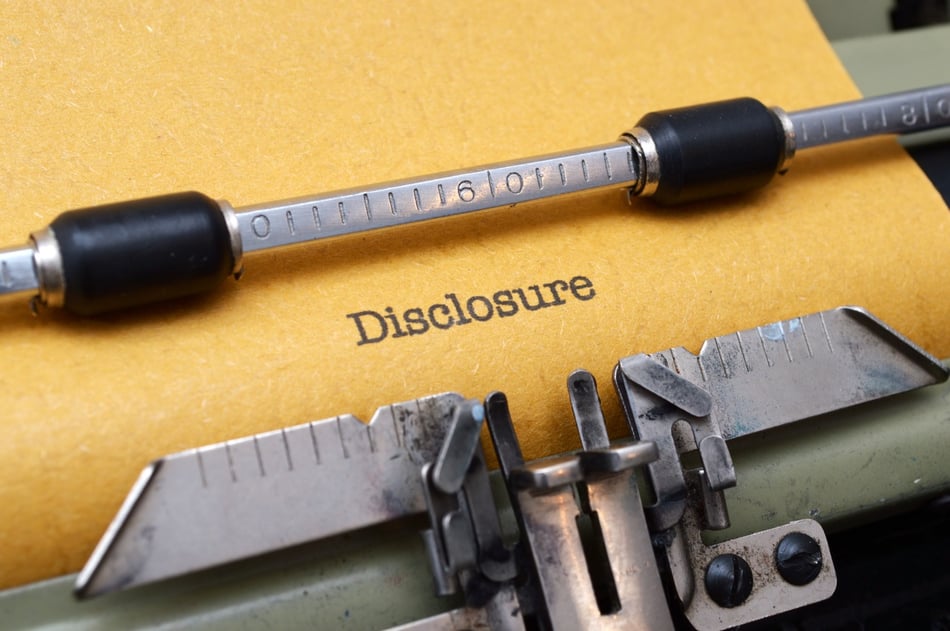Finding your way around US Customs compliance isn't easy. There are many regulations and laws to abide. Sometimes you detect errors on your entries, and they must be corrected right away. Submitting a prior disclosure is not only the best way, but maybe the only way to communicate to CBP as you detect errors.

Your information provided to Customs MUST be 100% accurate and, yet, mistakes happen.
For example, things change over time, how do you know that the HTS code you've been using for 20 years wasn't modified by the US International Trade Comission?
Another scenario: your trade compliance manager conducted a self-audit and found the valuation upon entry was inaccurate.
Post Summary Correction vs. Prior Disclosure
CBP prefers that you submit a post summary correction whenever errors are found in unliquidated entries. Conversely, prior disclosures are utilized for liquidated entries.
So, you have liquidated entries, now what do you do? CBP's general policy is to engage in open communication, and they encourage the submission of complete prior disclosures as soon as you become aware of an issue.
Four Requirments for Validation of a Prior Disclosure:
- Entry numbers or date(s) ranges and port of entry - you are not required to submit entries numbers that are not in violation;
- Class or type of merchandise, value, duties, etc.;
- Errors and details of violation, how it happened, etc., and the corrected information;
- Detailed plan to rectify the problem.
Additionally, you should determine the amount of interest and duties due, and tender that amount at the time of prior disclosure submission. If you prefer, CBP can calculate the amount due on your behalf. Upon receiving notification of the amount due, you have 30 days to tender that payment.
Finally, at the end of your letter, Leonard Rosenberg of STR Trade advises that you include a statement to the effect of:
"The Importer makes this disclosure without the knowledge of the commencement of any formal investigation of the disclosed information. In addition, should CBP determine that any additional lawful duties or fees, etc., are due in excess of those calculated by the Importer, those amounts will be tendered within 30 days of the date on which the lawful revenue and fees are determined by the Port Director and communicated to the Importer."
Disclosing entry errors on liquidated goods on your initial finding is in your best interest. There are many unknowns, but one this is certain: IF you discover a mistake, you SHOULD report it to CBP.
Steer Clear of Customs Entry Errors
Conduct internal audits regularly. Have your trade compliance manager review every clearance, and look for entry errors. If errors are found on your liquidated entries, then file a prior disclosure and pay the applicable duties and interest.
By conducting importer self-audits, you'll know where your company needs to improve, and you will be able to identify areas where errors are likely to occur more easily.
How soon should I submit a prior disclosure?
Submitting your prior disclosure as soon as possible is the general recommendation. If you need more time to gather the details and calculations, the law allows you 30 days to provide the information to CBP.
In some cases, you can request more time beyond the 30 days, but you must provide your progress, and reasoning for the extension.
You might consider delaying your submission until you've gathered all your information. Take caution when waiting, because if CBP begins an investigation before you submit, your disclosure could be invalid.
CBP Has My Prior Disclosure, Now What?
CBP will review your prior disclosure, and make sure you have the the four requirements completed with accuracy. They will then notify you regarding the validity of your disclosure. They will also look to see if an investigation has already commenced and whether you have knowledge of the investigation.
Here are some things you should know about the validation process:
- A prior disclosure is not considered valid if CBP has notified you that an investigation has commenced.
- If you can prove you did not know about an investigation and CBP says you did, you then need to provide proof that you were unaware.
When filing a prior disclosure, your primary objective is to receive a closing letter back from U.S. Customs.
Steer Clear of Customs Entry Errors
Conduct internal audits regularly. Have your trade compliance manager review every clearance, and look for entry errors. If errors are found, then file a prior disclosure and pay the applicable duties and interest.
After importer self-audits are conducted, you'll know where your company needs to improve. You will be able to more easily identify areas where errors are likely to occur.
There are other trade compliance benefits to internal import audits but that is for another blog.



